
Robert Winthrop Chanler, “Four Peacocks” (1927), two-sided screen (private collection, photo by Jason Weller, all images via the Monacelli Press unless noted otherwise)
In one of the many licentious anecdotes from Robert Winthrop Chanler: Discovering the Fantastic, the Gilded Age artist throws a party in his Gramercy Park “House of Fantasy” so raucous that his neighbors across the street — who happen to be painter George Bellows and his family — call the cops. When an officer arrives, he is lured into in with libations, and Robert Winthrop Chanler is soon seen sporting the merry policeman’s hat.

Cover of ‘Robert Winthrop Chanler: Discovering the Fantastic’ (courtesy the Monacelli Press) (click to enlarge)
An eccentric who lived the bohemian artist lifestyle to the hilt, as well as an artist whose work was prized by the elite and celebrated in the influential 1913 Armory Show, Chanler was an icon of his time. Now his name is almost forgotten. Recent restoration of his huge plaster murals has encouraged a new appreciation for his otherworldly art, where exotic animals sketched from his own Manhattan menagerie were painted in metallic hues, often joined by cosmic shooting stars and planets. His popular double-sided screens also portrayed his own invented myths that evoked a darker side of nature.
Discovering the Fantastic, recently released by the Monacelli Press, has essays based on presentations from the 2014 Chanler symposium organized by the Vizcaya Museum and Gardens in Miami, Florida. The museum is housed in the former estate of Chicago businessman James Deering, and still has Chanler’s incredible swimming pool ceiling, where shells are embedded in a plaster mural of sea creatures, alligators, and swirling waves.
However, plaster and water don’t mix well for preservation. After further damage from 2005’s Hurricane Wilma, the Florida museum undertook an extensive restoration of the pool mural. The action was followed by other Chanler projects. In 2010, Coe Hall Planting Fields Arboretum State Historic Park on Long Island commissioned artist Polly Wood-Holland to recreate Chanler’s lost 1921 mural of tropical birds and foliage. Then the New York Studio School of Drawing, Painting and Sculpture in Manhattan performed restoration on their own deteriorating Chanler ceiling and fireplace at the former studio of Gertrude Vanderbilt Whitney. Earlier this year, that space opened for its first regular public tours (as covered on Hyperallergic). Each of these initiatives has reminded the art community and wider world of Chanler’s strange work.
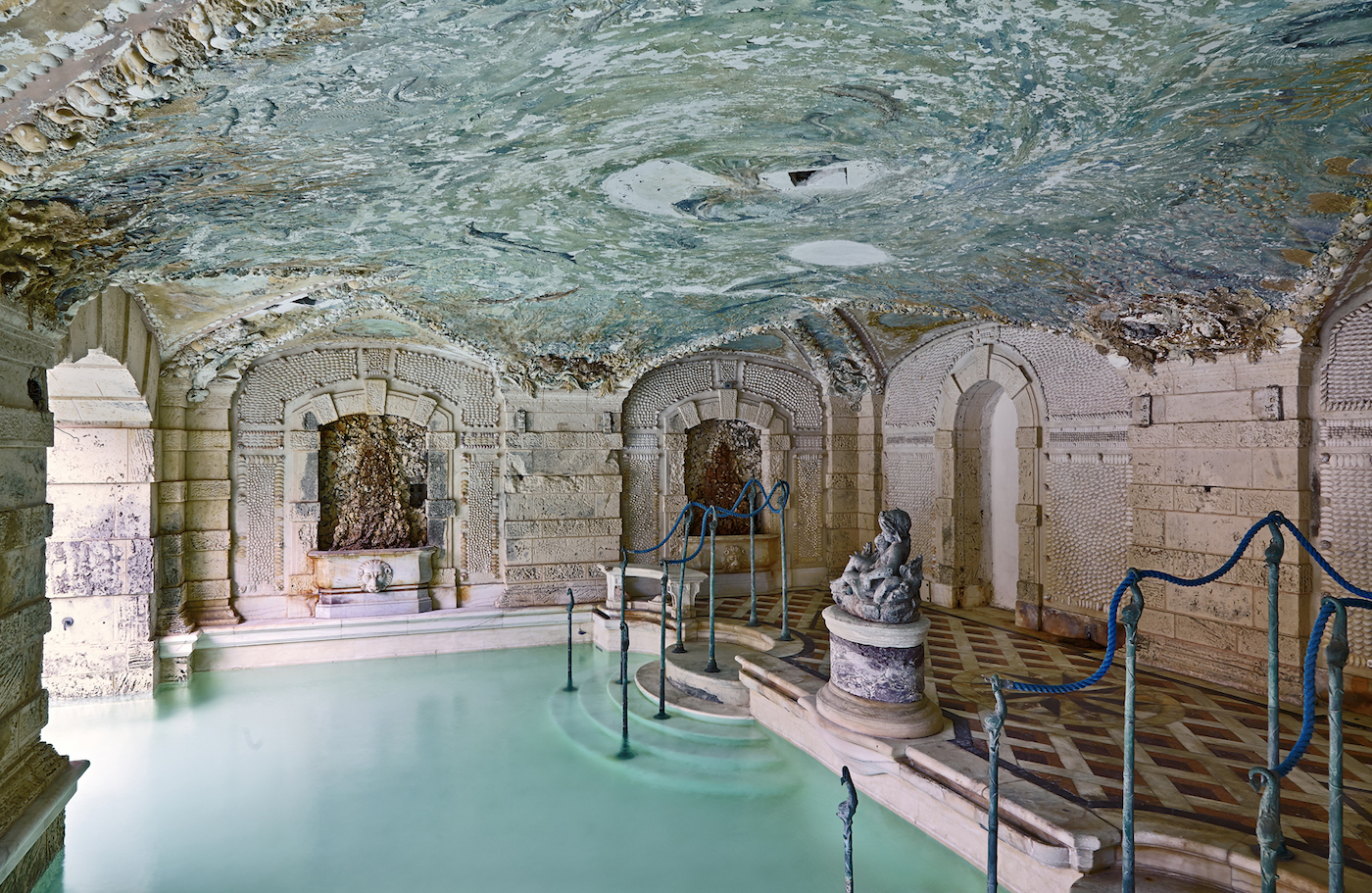
Robert Winthrop Chanler’s swimming pool grotto at the Vizcaya Museum and Gardens in Miami, Florida (photo by David Almeida)
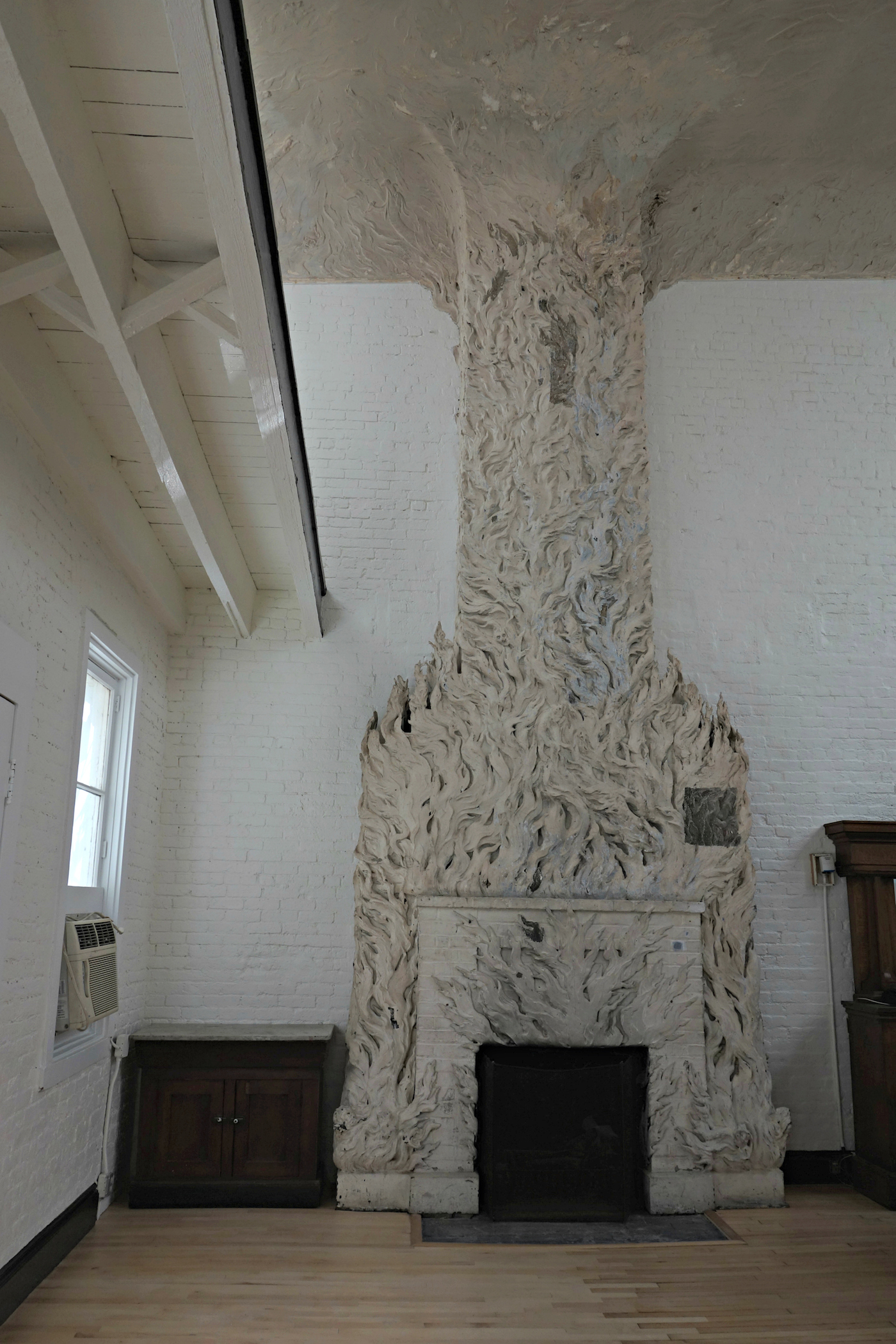
Robert Winthrop Chanler’s fireplace at the Whitney Studio (photo by the author for Hyperallergic)
Discovering the Fantastic is the first thorough book on Chanler’s career since his death in 1930. The attention from these restoration campaigns, as well as the centennial of the Armory Show in 2013, helped spark the reemergence of Chanler’s art in the public eye. During his life, he was a very public figure, born into the Astor family, with ancestors donning old New York names like Winthrop and Stuyvesant. He had a couple of disastrous marriages, covered extensively by the press, and posing for a portrait in his studio became the stuff of legend.
Betsy Fahlman, professor of art history at Arizona State University, cites in her book essay the portrait sitting of photographer Carl Van Vechten in April of 1928, a scene of absurdist debauchery that would surely make Salvador Dalí jealous.
After a lunch featuring “bowls of succulent rice and curry and huge pitchers of Bronx cocktails,” Van Vechten steps up on a stage. Blues music wails from a record player, Yorkshire terriers wrestle alongside, while in another corner “a poet composes verse on the top rung of a meaningless ladder; in the center of the floor a flamboyant female is making Shanghai gestures.” And there is the artist himself, whom Van Vechten vividly describes:
All the time Bob is painting, painting like hell!! He slings paint against the canvas, hurls it in sadistically until you wonder why it doesn’t go clean through, while he carries a running commentary of his method: “Work like hell. Never know anything. More I learn, more I forget. No good painter ever knew anything. Bad painters know. Try this blue for shadow on the nose: may come out right. Can’t be sure. Rotten! Try red. Try green. Hell!”
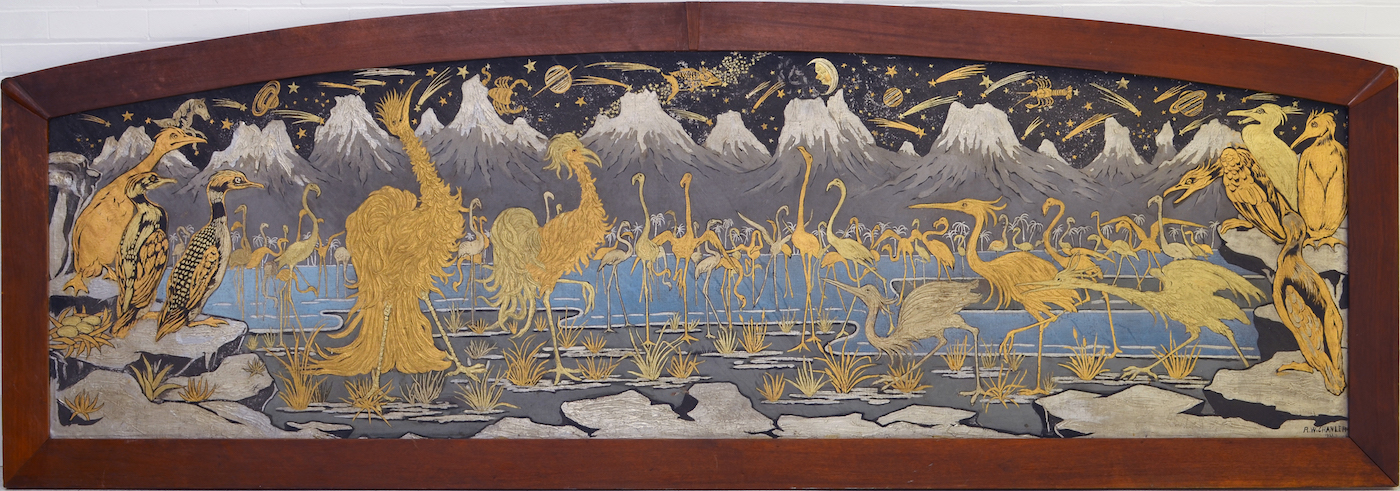
Robert Winthrop Chanler’s “Sea Birds” (1920) (Rokeby Collection, Barrytown, New York, photo by Whitney Cox) (click to enlarge)
These Samuel Beckett-worthy absurdist scenes make Discovering the Fantastic a surprisingly enjoyable read for a hefty art tome, although the omnivorous tastes of Chanler’s work are just as extraordinary. From the pool grotto, with its rippling plaster dimensions, to the flame-consumed fireplace at the Whitney Studio, Chanler’s creations appear as whimsically cinematic as a Georges Méliès silent film, and as over-the-top opulent as a rococo chapel.
His colossal paintings, like “Hudson-Fulton Fête” — a 25-by-15 foot green and silver scene with old and new ships sailing against the Manhattan skyline, while sea gods, octopi, and dolphins ride the waves — have a density of playful illustration that shares some kinship with Duke Riley’s more recent sprawling illustrations.
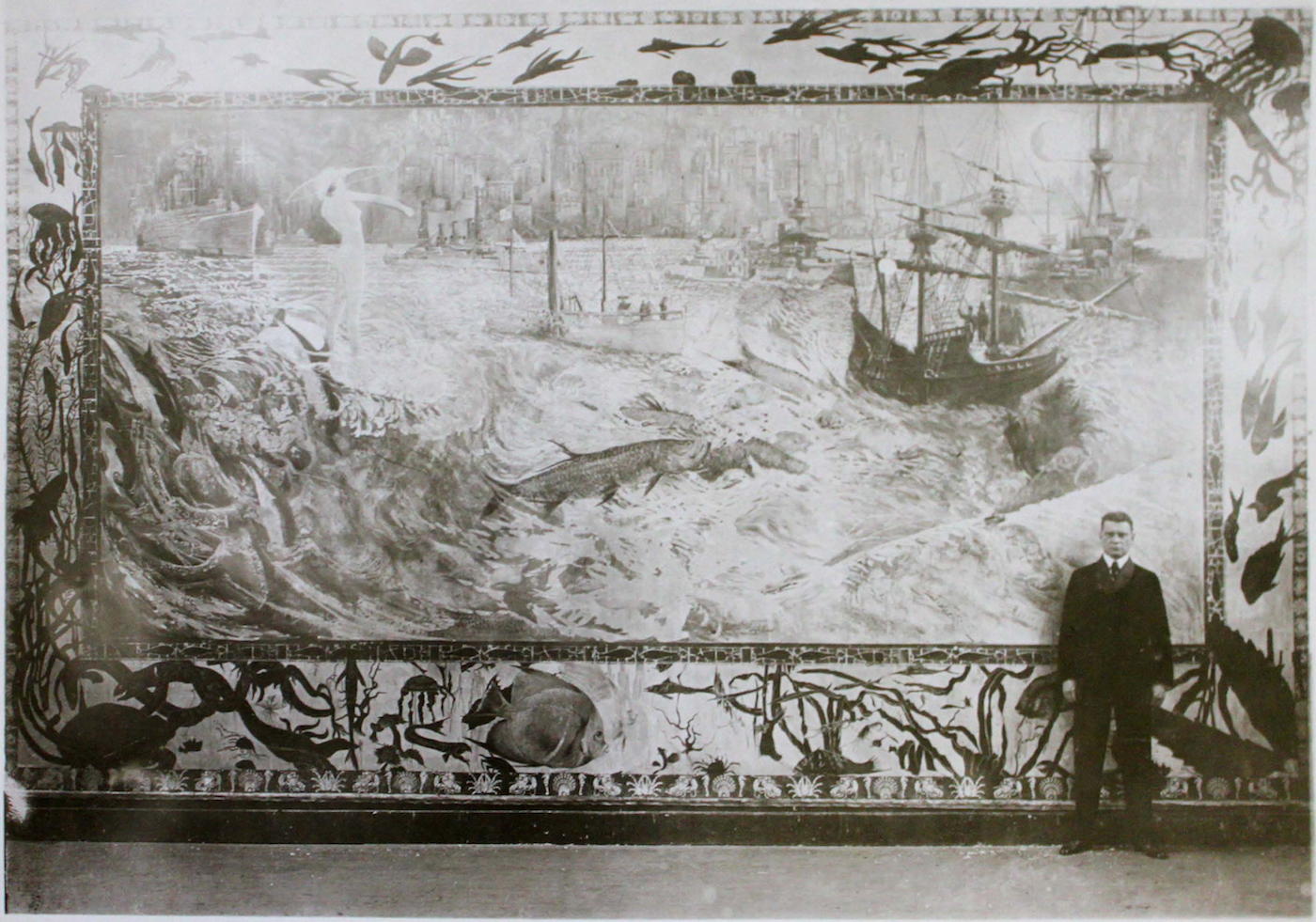
Robert Winthrop Chanler with his “Hudson-Fulton Fête” (1913) (courtesy Rokeby Collection, Barrytown, New York)
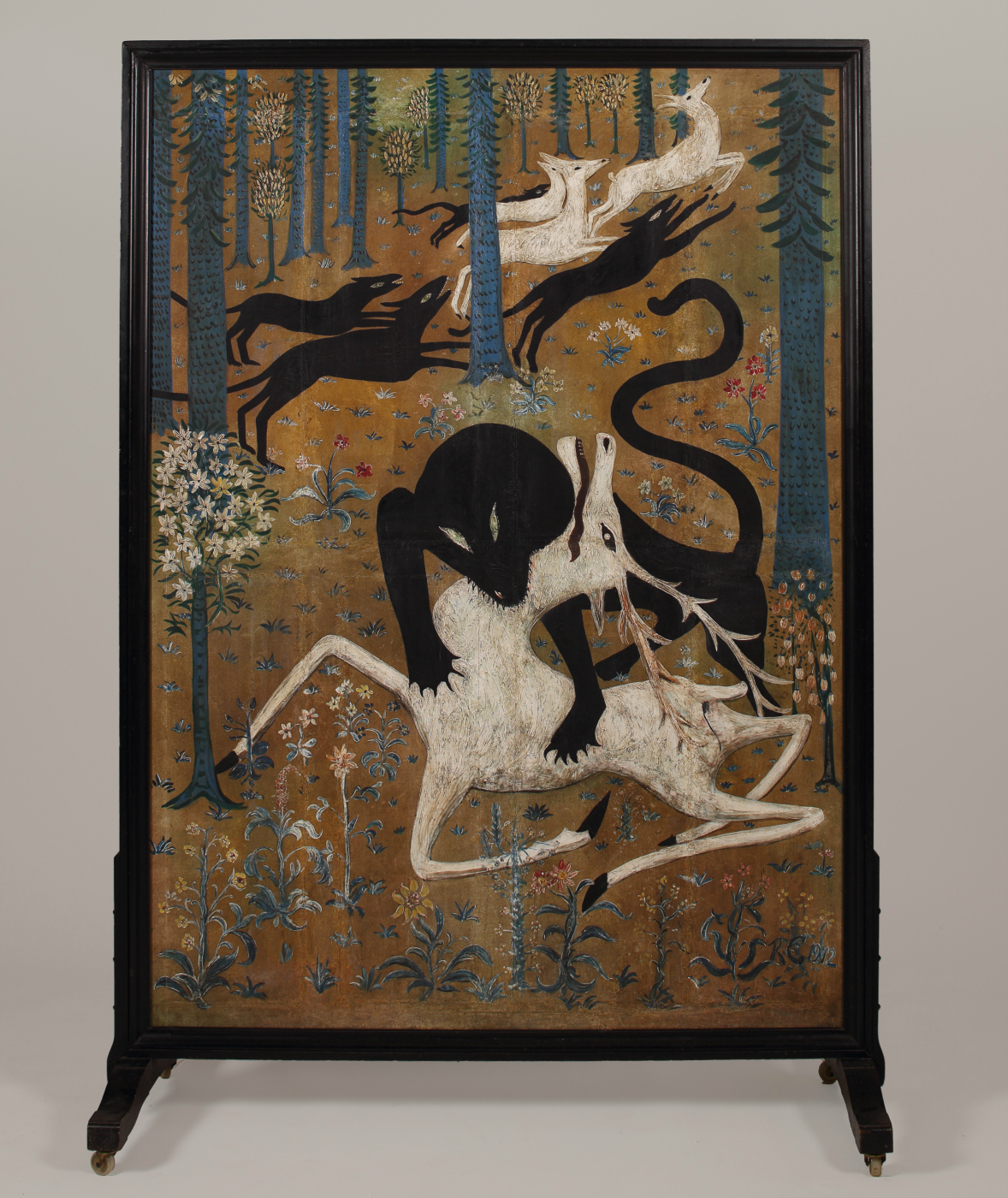
Robert Winthrop Chanler, “Leopard and Deer (Death of the White Hart)” (1912); another version of the screen was shown at the Armory Show (courtesy Rokeby Collection, Barrytown, New York, photo by Whitney Cox)
A painting of a leopard leaping onto a deer from the Armory Show has the animals moving with the fluid forms of Matisse figures, but the setting, with its detailed foliage, seems right out of the Middle Ages tapestries Chanler studied at the Musée de Cluny in Paris. Klimt-like gold gave his depictions of peacocks a contemporary feel, while the subject was directly influenced by the proud, wrathful birds in James McNeill Whistler’s 19th-century “Peacock Room.”
And then there are his Japanese lacquer-inspired screens, which often have a hint of malevolence in their seemingly serene subjects. For example, a 1914 screen, now at the Metropolitan Museum of Art, has a prickle of porcupines on one side, and a “Nightmare” on the other, where bats, skeletons, a clown, crocodiles, an octopus, and floating souls are consumed in crawling layers of inky paint.

Robert Winthrop Chanler, “Porcupines” (1914), a two-sided screen with “Nightmare” (courtesy the Metropolitan Museum of Art)
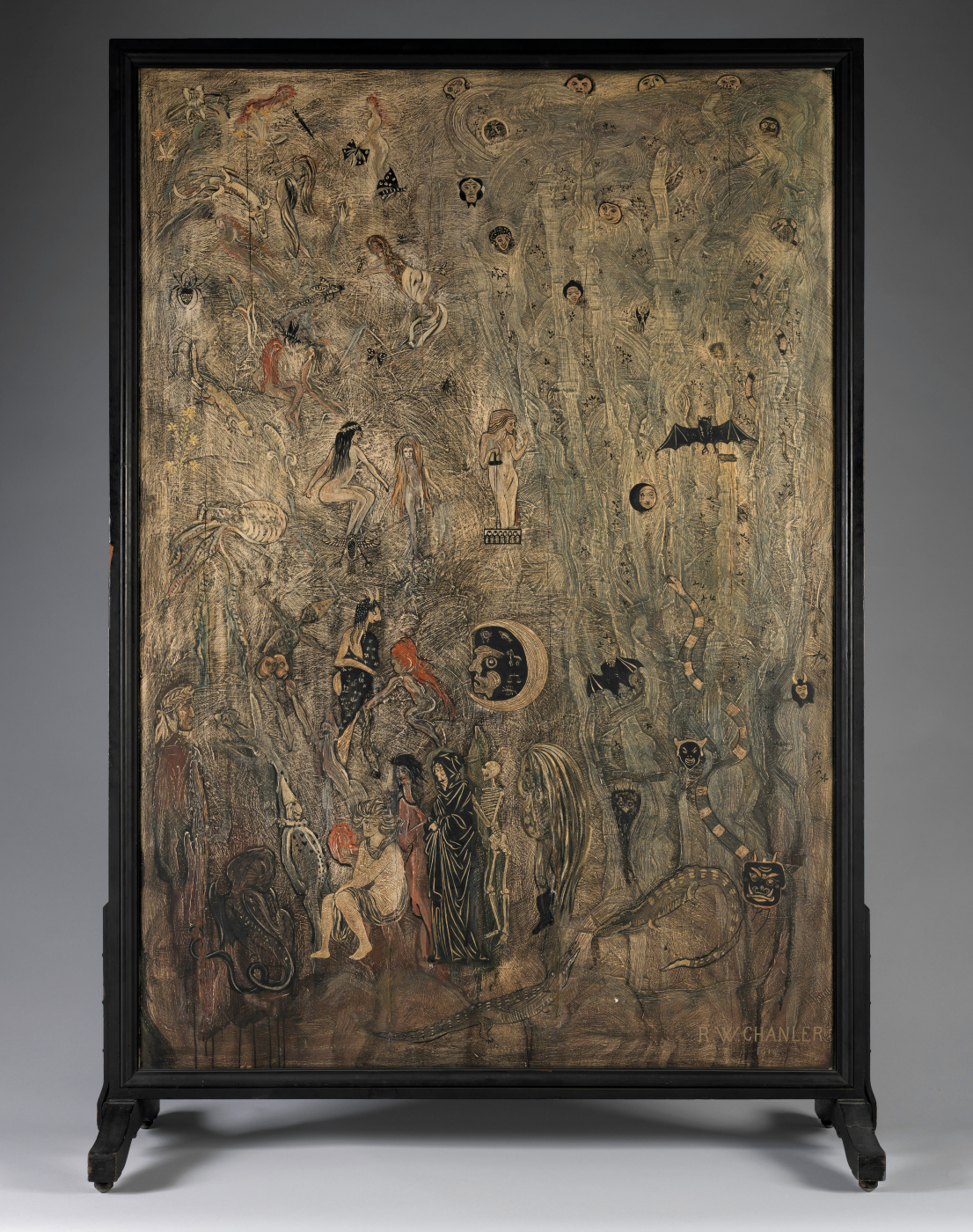
Robert Winthrop Chanler, “Nightmare” (1914), a two-sided screen with “Porcupines” (courtesy the Metropolitan Museum of Art)
Scholar Laurette E. McCarthy points out in her essay that Chanler’s screens made up a huge portion of the US art in the 1913 Armory Show, with between 24 and 25 on view, and all positioned near the entrance. She notes this was partly due to his connection with the elite who funded the show and lent works, yet it also pointed to what was considered essential about early 20th-century art. “For many this is what made art modern; modern art was more of a mindset, located not necessarily in the art created but in the creativity and originality of the artists themselves,” McCarthy writes.

Photograph of Robert Winthrop Chanler (1900) (courtesy Rockeby Collection, Barrytown, New York) (click to enlarge)
Chanler was nothing if not original, as a somewhat manic 1900 photograph of the artist conveys. He has the end of a paintbrush in his mouth, a jaunty beret on his head, a sword in each hand, and a crown, urn, and other curios looming in the background. Even when he painted a trope like an American Indian bison chase — his “Modern Buffalo Hunt (Hunting Buffalo with Automobiles)” — it featured men riding in cars and on tractors as they roared after the animals. His collection of society portraits, meanwhile, included occultist Aleister Crowley alongside the usual salon figures.
After his death following a heart attack on October 24, 1930, at the age of 59, it must have seemed like Chanler’s name would live on forever, or at least through the 20th century. Gina Wouters, curator at the Vizcaya Museum and Gardens, writes that numerous factors caused this “fall into oblivion,” from “basic practicality to general cultural shifts”:
Bard College chose not to advance with an exhibition in the 1970s because of the difficulty of bringing Chanler’s work to the public eye. His murals and installations and his screens are nearly all in private estates and collections, the very audience for which they were intended. His work was not created for the masses, but rather for a refined stratum of society.
Wouters adds that the change in art tastes between the World Wars further made his bombastic art unfashionable. Then there was the fact he self-identified as a decorative artist, leaving his boundary-blurring art marooned far from a more central place in art history.
Chanler was not the only Gilded Age flame to extinguish in the later decades of the 20th century. Popular studio model Audrey Munson, for instance, who posed for nearly every one of the era’s prominent artists, nearly disappeared, spending the last decades of her life in a mental institution. Discovering the Fantastic, along with the recent preservation of Chanler’s work, may not mean a return to the heights of popularity he enjoyed in his lifetime, but it does present a powerful argument for remembering. If you visit his House of Fantasy today at 147–149 East 19th Street, there likely won’t be any Jazz Age parties, and the tropical fish, ravens, gila monsters, monkeys, sloths, rattlesnakes, and other animals known to populate his menagerie have long since departed. Yet above the door is a relief of colorful giraffes, a gift from his artist friend Charles Cary Rumsey. Traces of Chanler remain, and for each are stories of extravagance, and some of the most creative art of the early 20th century.

Robert Winthrop Chanler, “Four Peacocks” (1927), two-sided screen (private collection, photo by Jason Weller)

Robert Winthrop Chanler’s 1912 mural at Gertrude Vanderbilt Whitney’s studio in Old Westbury, Long Island, New York (photo by Whitney Cox)
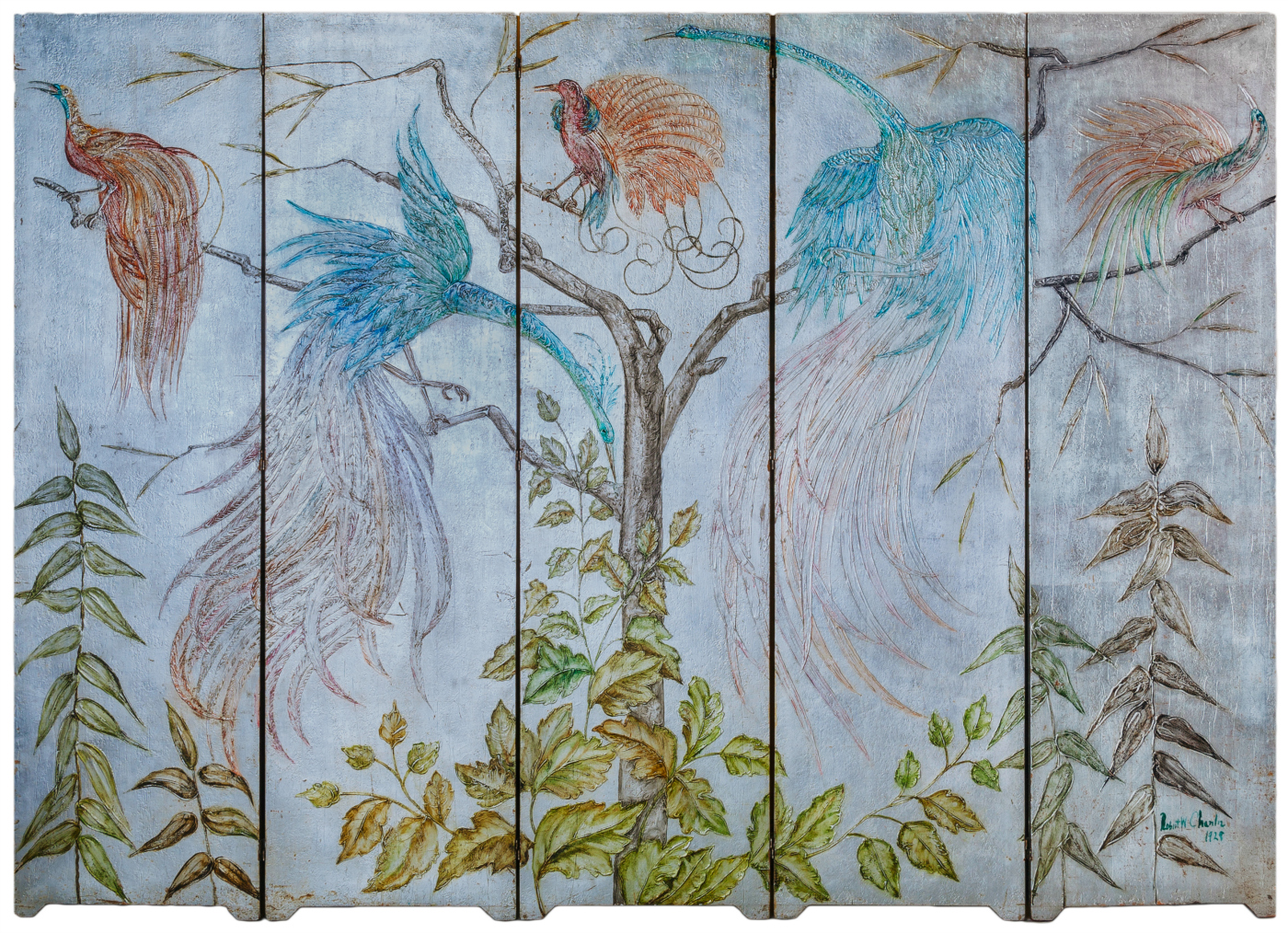
Robert Winthrop Chanler, “Bird of Fantasy” (1928) (courtesy Collection of Regina and Bruce Drucker, Pasadena, California, photo by Jonathan Urban)
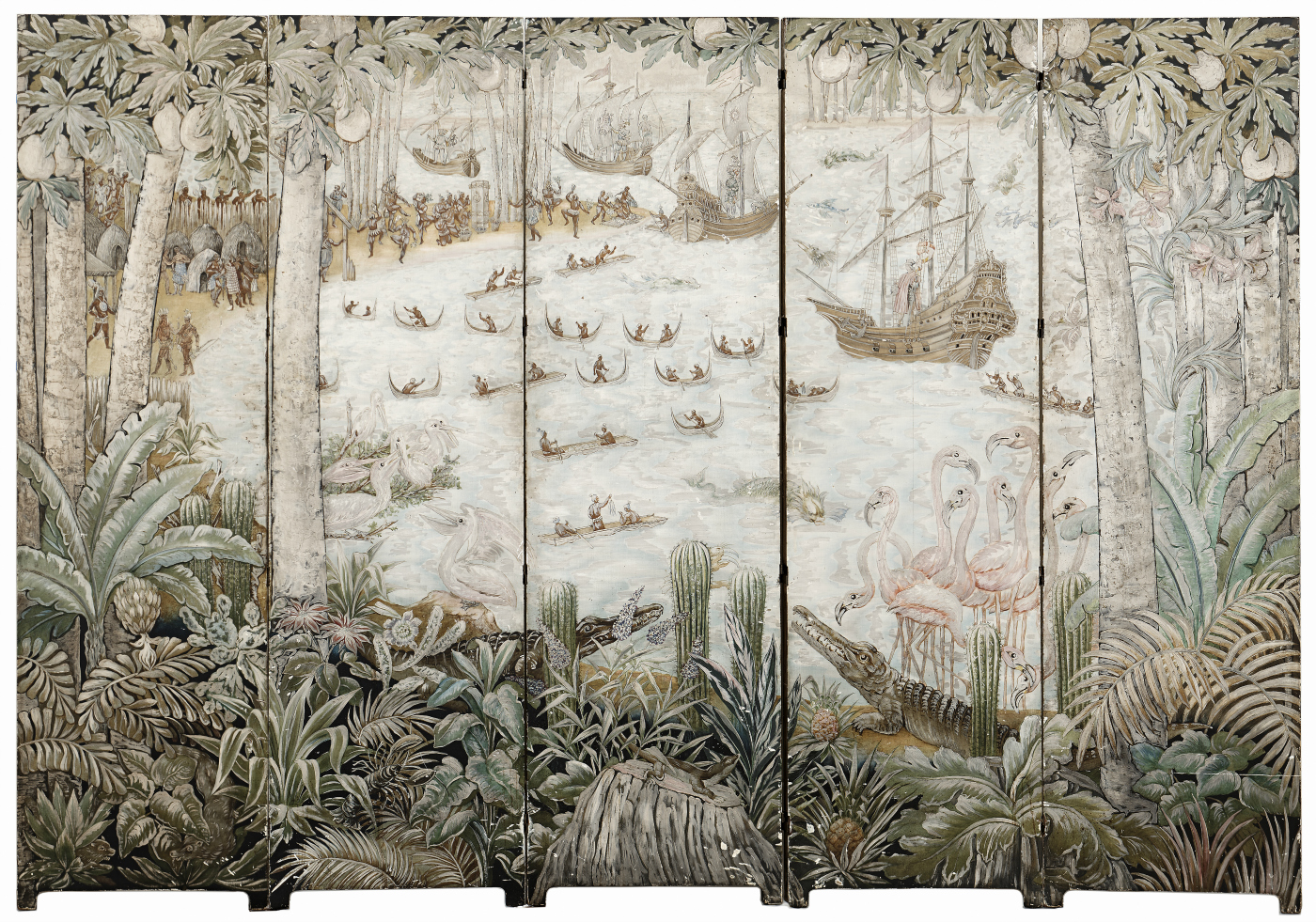
Robert Winthrop Chanler, “Vizcayan Bay” (1920), two-sided screen with “Untitled (Landscape)” (courtesy Vizcaya Museum and Gardens, Miami, Florida, photo by David Almeida)
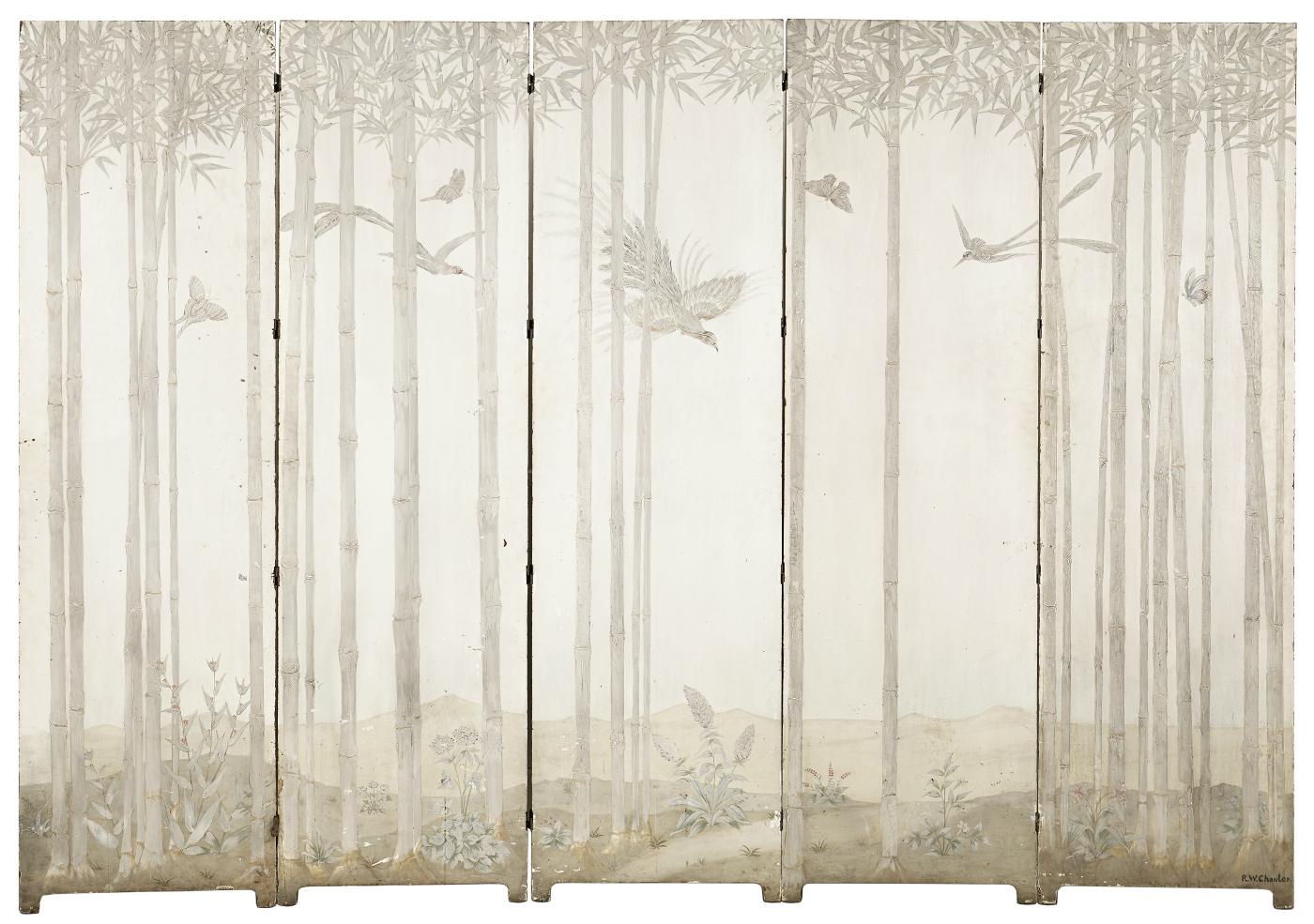
Robert Winthrop Chanler, “Untitled (Landscape)” (1920), two-sided screen with “Vizcayan Bay” (courtesy Vizcaya Museum and Gardens, Miami, Florida, photo by David Almeida)
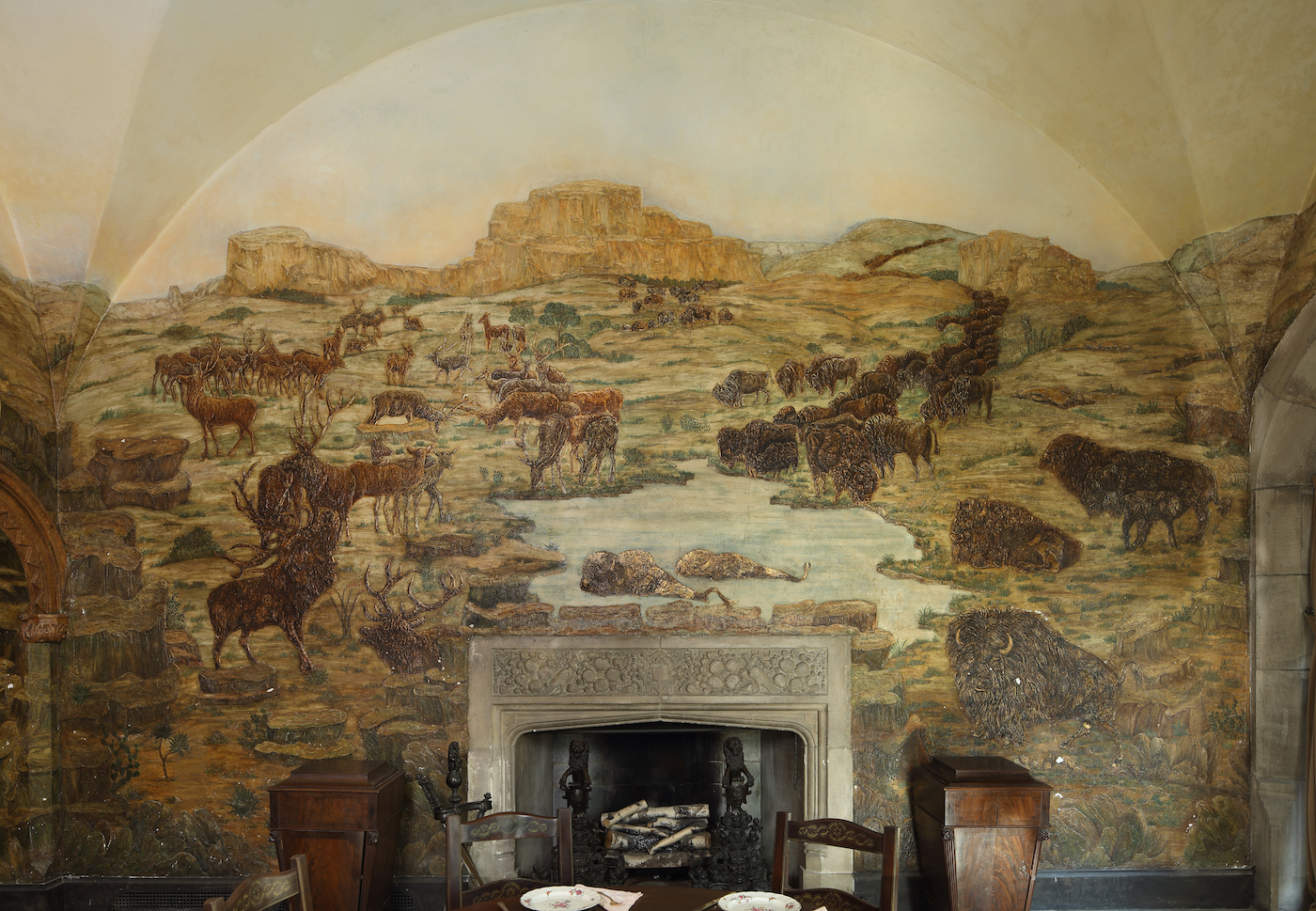
Robert Winthrop Chanler’s “The Buffalo Mural” at Coe Hall in Oyster Bay, New York (photo by Whitney Cox)
No hay comentarios:
Publicar un comentario